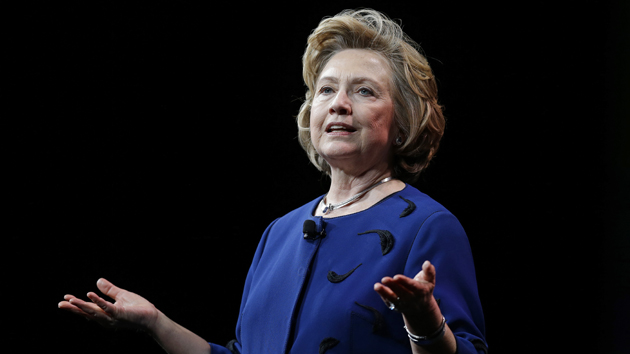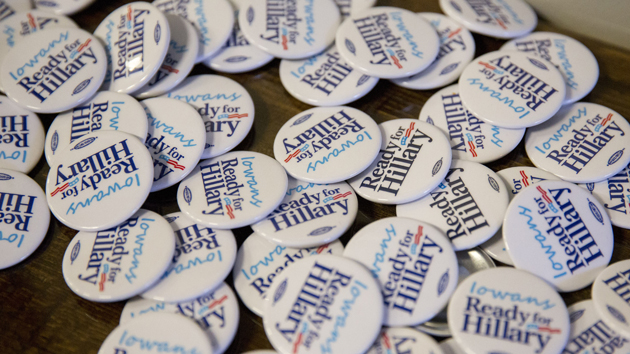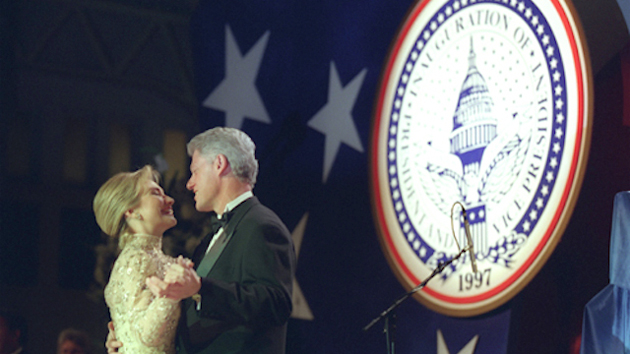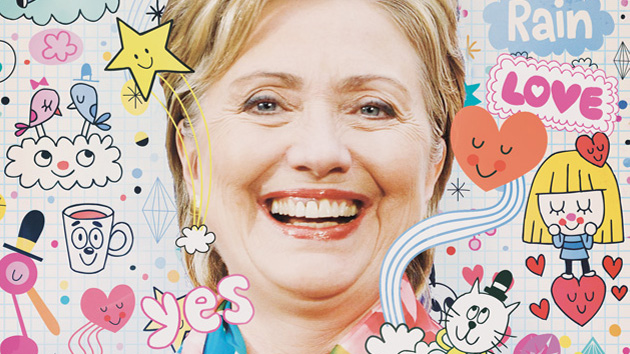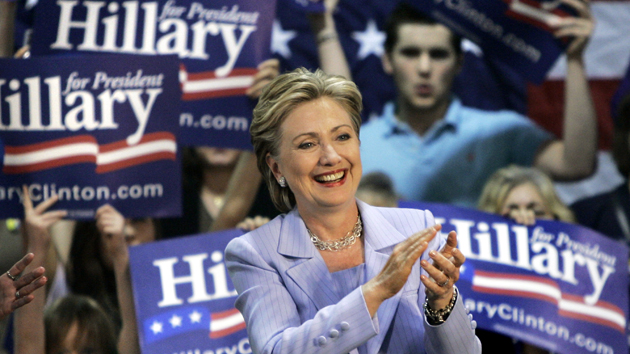
Hillary Clinton campaigning in 2008Elise Amendola/AP Photo
When Hillary Clinton narrowly lost the Democratic nomination in 2008, there was one key voting bloc that derailed her presidential bid: college students and young adults, who threw their support behind Barack Obama. Ready for Hillary, the primary super-PAC paving the way for a Clinton 2016 campaign, is already hard at work to make sure history doesn’t repeat itself should she decide to enter the race.
The group brought in former Obama campaign youth vote coordinator Rachel Schneider to oversee outreach to voters ages 16 to 30, with a particular focus on those still in school. Schneider has spent the last few months traveling around the country to set up satellite organizations on college campuses with the goal of attracting all of the best student organizers to Clinton’s side before any other Democrat launches a presidential campaign. Earlier this year, she swung through Missouri and South Carolina. Last week, Schneider toured New Hampshire’s main colleges, and she’s scheduled to visit Iowa next week, where she’ll meet with students from the University of Iowa, Iowa State University, Drake University, and the University of Northern Iowa.
There are now 33 Students for Hillary groups nationwide. So far they’re recruiting the most die-hard activists to prepare for next fall, when they’ll blitz new students during orientation to build Hillary’s army. “I’ve been focused on identifying students on campuses who are interested in being part of this movement from the ground floor,” Schneider says. For Democratic-leaning students interested in a career in politics it’s a no-brainer: leading a Students for Hillary group will position them as prime contenders for low-level jobs in Clinton’s actual campaign.
“It’s pretty neat to sort of rally around this person even without them having stated intentions to run,” says Monica Diaz, president of the Iowa State University College Democrats, who’s in discussions with Schneider about setting up a Students for Hillary group at her school. “I hope we can rally up enough people to push her to run, and by starting this early, I think we can.”
Schneider, 25, studied journalism at Northwestern University but gravitated to politics. She joined Obama’s 2012 reelection campaign, first as an intern—”I was in a paying job and [the deputy youth director] convinced me to leave my paying job to intern on the campaign,” she says—then eventually worked her way up to national youth vote coordinator. Schneider looks straight out of the catalog of stereotypes for the Obama generation. When we met in Ready for Hillary’s Arlington office in early April, she wore a bright plaid shirt and chunky hipster eyeglasses. After Obama won, Schneider conducted a study for the Youth Engagement Fund (a project of the Democracy Alliance) on what various campaigns—including Obama’s—did to organize students during 2012. She has carried those lessons to her work at Ready for Hillary. “It was a really extended post-mortem and analysis,” she says. “I learned an unbelievable amount.”
Ready for Hillary is working with 270 Strategies, a consulting firm founded by two Obama alums, to build their campus strategy. “A campaign can get many benefits from recruiting a college student,” says Mitch Stewart, one of the firm’s cofounders and the Obama campaign’s director of field operations in Iowa when Obama won the 2008 caucuses thanks to strong student turnout. “Beyond getting their vote, you can get a lot of energy and activism and enthusiasm that can invigorate an entire campaign.” College students—with their abundance of free time, few obligations, and fresh-faced enthusiasm—are often the foot soldiers campaigns depend on for door-knocking and phone-banking.
Ready for Hillary is employing the so-called snowflake model pioneered by the Obama campaign to build their college campus infrastructure. Rather than top-down orders from the central organization, the super PAC offers guidance to the Students for Hillary groups but lets each individual campus chapter devise their own outreach tactics. “It’s really important for us to set up a model that allows people to organize themselves,” Stewart says.
Each week, Schneider hosts several video conference calls with volunteers from the campus groups to teach them the basics of campaign organizing, including how to use Facebook to recruit fellow students. The goal is to have a robust staff for each Students for Hillary group established by the fall so that each organization can hit freshmen orientation with gusto.
The size and scope of the various chapters vary from school to school. Haley Adams, a sophomore at Yale who launched one of the first Students for Hillary groups last year, says that her group signed up over 100 supporters in a single day when Clinton visited her alma mater to accept an award last October. At conservative-tilting Clemson University in South Carolina, Bria Burke-Koskela, a sophomore political science major, set up a Students for Hillary chapter after meeting Schneider this spring, and about 25 people have signed up so far.
At the more-liberal University of Missouri, around 40 people showed up when Schneider and Lisa Changadveja, Ready for Hillary’s head of LGBT outreach, visited the campus in February. Emily Waggoner and Caleb Cavarretta, head of the Mizzou chapter, say they’ve been amazed by how quickly their fellow students have latched onto supporting Clinton; they’re already spotting Ready for Hillary stickers on backpacks and cars around campus. They’ve added a professional campaign flavor to their group. In addition to Cavarretta and Waggoner, the Missouri student group includes several official student positions: chief of staff/data officer, creative director, outreach director, events director, and campus coordinator. Whenever fickle Midwestern weather permits, they’ve been out tabling at the Speaker’s Circle, a highly foot-trafficked part of campus near the library. They’re aiming to collect 400 to 500 names of would-be Clinton supporters by the end of this semester. “I find it so incredible that there’s so much support for her among young Americans,” Waggoner says, “which is something that she lacked in 2008. I think that this time around it could change a lot of things for women.”
It’s important to remember the history of Clinton’s last campaign to understand why Ready for Hillary has placed such a heavy emphasis on drawing in young voters. Despite a few stumbles, Clinton’s campaign was still cloaked in an aura of inevitability heading into the Iowa caucuses in January 2008. But Clinton and her staff had resigned themselves to losing that one key voting bloc: college students and young adults. Obama’s message of hope and change paired with a robust campus-organizing infrastructure had locked up the student vote for the young senator. “There was something about the issues Obama cared about and his life story that appealed to young people that was organic,” says Tobin Van Ostern, national director of Students for Barack Obama in 2008, “whether that was the way he was able to talk to young people, or the fact that he was a younger candidate, or the fact that his upbringing and more diverse background is much more common among younger folks.”
Instead of appealing to twentysomething voters, the Clintonites went on the offensive, trying to peel away older voters and depress Obama turnout by inciting generational warfare. “This is a process for Iowans,” Clinton said about a month before the caucuses, a pointed comment aimed at college students after the Obama campaign distributed pamphlets encouraging them to vote. “This needs to be all about Iowa, and people who live here, people who pay taxes here.” Her advisers piled on. “Our people look like caucus-goers,” Mandy Grunwald, a senior media consultant on the campaign, said after the Jefferson-Jackson dinner in Des Moines, “and [Obama’s] people look like they are 18. [Mark] Penn said they look like Facebook.” Even Bill joined in. “Historically,” the former president said at an event on a college campus, “the Iowa culture has been that the caucus should just be for Iowans because it’s not an election.”
Obama, meanwhile, had been begging, practically pleading for support from college kids. “Don’t let somebody tell you that you are not part of this process,” he said at a December 2007 event at Grinnell College, “because your future is at stake.” His efforts paid off. Clinton finished third in the caucuses, derailing her campaign’s momentum. Obama came in first thanks to his volunteers on college campuses. “We really, really invested in having very specific outreach,” Stewart says of that campaign, “both from a material and message perspective, but also from an organizing perspective, allowing college students who support the candidate the tools necessary so that they can organize other students.” Voters younger than 30 voted 57 percent for Obama in the caucuses and made up more than a fifth of the vote, a trend that would continue throughout the nomination battle.
Part of Clinton’s struggles were strategic, a failure to invest properly in building campus infrastructures. “I’m still, to this day, surprised that the Hillary team didn’t do more,” says Van Ostern, “particularly after it was clear that young people were supporting Obama by a lot and he was able to turn them out. I have to imagine if they had done more outreach to young people, particularly young women, they could have had a similarly compelling, emotional appeal.”
Instead, there was also a palpable distaste for Clinton among college-age voters that election cycle. I was an Iowa college student myself during the last Democratic nomination, and I remember all my friends rallying around Obama with only a handful of holdouts canvassing for Clinton. She represented everything old news to my generation. We came of age during the tail end of Bill’s presidency. The Clintons were our parents Baby Boomer obsession. The old fights over draft dodging and inhaling were quaintly out of touch when Barack Obama owned up to being a stoner in high school and having experimented with cocaine. The Iraq War, launched while we were in high school contemplating our futures, was the initial moment of political awakening for many of us; Clinton’s vote in favor of the war destroyed her chances of winning over the college-age crowd last time around.
Republicans have already signaled that they plan to highlight Clinton’s age and Baby Boomer status should she become the Democrats’ nominee. “The idea that we’re at the end of her generation and that it’s time for another to step forward is certainly going to be compelling,” Karl Rove has said.
Yet that argument appears to hold less weight among the college kids of today. She receives rapturous applause when her speaking tour takes her to college campuses, an increasingly frequent occurrence. Polls have found that voters ages 18 to 39 are more likely to view Clinton favorably than their parents.
Ready for Hillary doesn’t have much in the way of an explanation for why the current crop of college Democrats are more welcoming to Clinton than the last generation. Schneider couldn’t offer more than a shrug of her shoulders when I posed that question to her. “I think students really do see that Hillary stands for the issues that they care about and that she’s willing to fight for those issues,” she said.
Hillary’s newfound appeal among young voters seems less about substance and more about a shift in style. Clinton has been on the speaker circuit since she left the Obama administration last year, largely shying away from controversial political subjects. Instead, she’s embraced a more modern image, tweeting and sporting chic sunglasses in her profile picture. And current students never lived through the Clinton battles of yore. For the kids Ready for Hillary aims to organize, blue dresses, selling out welfare, and Black Hawks down are mere pop-culture relics rather than vivid representations of the politics of the past. And much as students latched onto the historic nature of Obama as the first African American president, current students might rally around the proposition of electing the first female president.
“She’s been doing things over the last few years that are designed to have a bigger youth appeal,” Van Ostern says of Clinton. “Whether that’s certain conferences or speaking at certain things, or even the simple things like being willing to poke fun at herself on Twitter and that whole meme. Those things, while they’re pretty light, they humanize a candidate. What young people really look for universally is authenticity.”
Here’s a map of all of the Students for Hillary groups that have already been established or are in the works:

